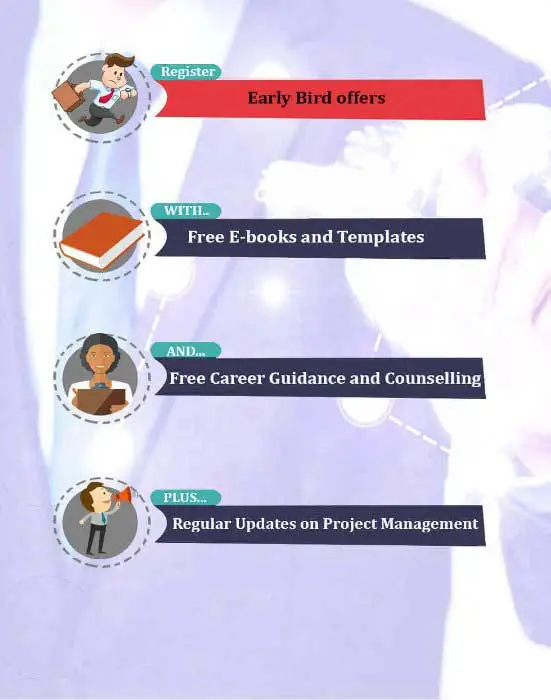 The term Hybrid Project Management (HPM) refers to a methodology that incorporates the ideas and practices of both traditional project management methodologies similar to the Agile and Waterfall project management methodologies (like extreme programming).
The term Hybrid Project Management (HPM) refers to a methodology that incorporates the ideas and practices of both traditional project management methodologies similar to the Agile and Waterfall project management methodologies (like extreme programming).
It is a versatile and adaptable strategy that tries to capitalize on the positive aspects of various techniques by combining them in a way tailored to the requirements of a particular project.
In hybrid project management, the project managers and teams personalize the processes and techniques of project management depending on the specific requirements and aspects of the project. Combining the phases of the traditional PMP certification approach, such as planning and documentation, with Agile development practices, such as iterative development and continuous feedback, is required to accomplish this.
Hybrid project management is an approach that combines elements of traditional project management methodologies with Agile practices. It is often used when a project requires flexibility and adaptability but must also adhere to certain constraints and processes.
In an HPM approach, managers can choose the most suitable methodologies and practices for each project. This means that they can tailor the project management approach to fit the unique needs and requirements of the project rather than being limited to a single methodology.
Benefits of Hybrid Management
One of the key benefits of hybrid project management is that it allows for a more iterative and collaborative approach to project delivery. By incorporating Agile practices such as regular feedback loops, continuous improvement, and adaptive planning, project teams can respond more effectively to changes and uncertainties that may arise during the project.
Here are some bullet points for the benefits of Hybrid Project Management:
1. Flexibility:
Hybrid project management combines the best of traditional and Agile approaches, allowing for greater flexibility in project execution. It allows teams to adapt to changing requirements and deliverables more effectively.
2. Improved collaboration:
Hybrid project management encourages collaboration between team members, stakeholders, and clients. It promotes open communication and transparency, leading to better decision-making and problem-solving.
3. Risk management:
Hybrid project management incorporates risk management techniques from both traditional and Agile methodologies. This helps identify and mitigate potential risks early on, ensuring project success.
4. Faster delivery:
By leveraging Agile practices, hybrid project management enables faster delivery of project milestones and iterations. It allows for incremental development and frequent feedback, resulting in quicker time-to-market.
5. Cost efficiency:
Hybrid project management optimizes resource allocation and reduces unnecessary costs. It allows for better utilization of resources, ensuring that the right people are working on the right tasks at the right time.
6. Scalability:
Hybrid project management scales and tailors to fit projects of different sizes and complexities. The framework provides a scalable solution for efficient project management, allowing adjustments based on project requirements.
Additionally, it balances traditional project management’s predictability and structure and the flexibility and responsiveness of Agile methodologies. Meeting regulatory or compliance requirements and depending on other projects or teams that follow more traditional approaches can be particularly beneficial in these projects.
Implementation of Hybrid Project Management
Using both traditional and Agile methods of project management
The most common approach to introducing hybrid project management is as follows: Using a traditional approach known as Waterfall methodology, the project’s requirements, and scope are defined from the get-go.
Then, the development and testing are completed utilizing the PMP Agile training, sometimes known as sprints. Prioritizing the various task packages is integral to the sprint planning process. Stakeholders will submit input following each sprint, which will be used to enhance future iterations.
Before implementing a hybrid strategy for project management, make sure to accomplish the following.
- Start by outlining your project and why you’ll employ Agile and Waterfall methodologies.
- Create a process roadmap including the entire team and other interested parties.
- Maintain a regular schedule of project management process evaluations.
- Modify it as needed if that turns out to be the case.
By taking this route, you can ensure that you and everyone involved in the project, from your team to its stakeholders, commit to seeing the job through to its successful conclusion.
Differences Amongst the Hybrid, Agile, and Waterfall Approaches to Project Management
The following table compares Hybrid, Agile, and Waterfall project management methods and suggests when to employ each.
| Hybrid Project Management | Agile | Waterfall | |
|---|---|---|---|
| Approach | A blend of Agile elements and traditional elements | Incremental and Iterative | Linear and Sequential |
| Flexibility | High | Very High | Low |
| Adaptability | High | Very High | Low |
| Documentation | Moderate | Minimal | Extensive |
| Stakeholder Engagement | Emphasized | High | Moderate |
| Iterative Development | Yes | Yes | No |
| Planning | Structured and adaptable | Adaptive and collaborative | Detailed and extensive |
| Risk Management | Balanced approach with risk mitigation | Emphasized | Addressed but less flexibility |
| Project Visibility | Moderate | High | High |
| Recommended When | Projects with evolving requirements | Complex and uncertain projects | Well-defined and stable projects |
The specifics and constraints of the project will guide the choice of approach. HPM is ideal when you require both structured and ad hoc elements. Experts recommend using the Agile technique because the needs and scope of such projects are likely to evolve over time.
Waterfall works well for projects whose requirements can be easily specified due to the method’s sequential nature. After carefully considering the characteristics of the project and the organizational context, a suitable methodology can be selected and used, resulting in successful project delivery.
Regarding specific practices and techniques, HPM can combine Waterfall and Agile methodologies. For example, the project may start with a traditional Waterfall approach for the initial planning and requirements-gathering phase and then transition to an Agile approach for the development and delivery phases.
It’s important to note that this type of project management is not a one-size-fits-all solution. The specific approach and practices used will depend on the nature of the project, the team’s capabilities, and the organization’s overall project management framework.
Conclusion
This course covers everything you need to succeed in project management! Learn the ropes of Project Management by working on actual projects and getting feedback worthy of the output you produce along with a few critical opinions. HPM will surely keep you up and about in the field of project management throughout the world. Whether you are just starting or have a lot of years of experience up your sleeve, join the courses that grab your attention through ProThoughts and level up your career!



